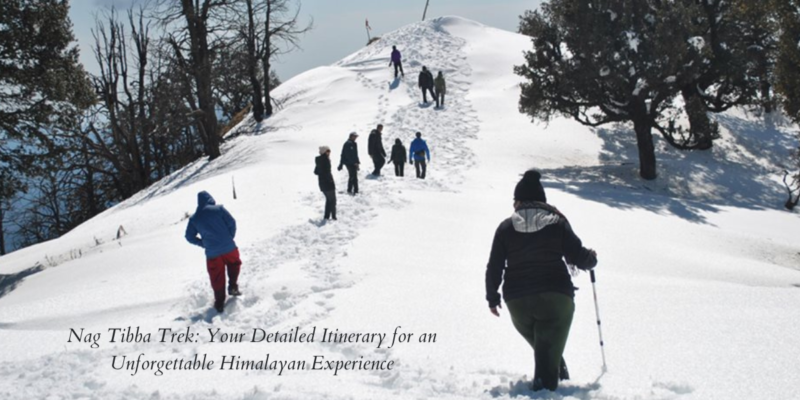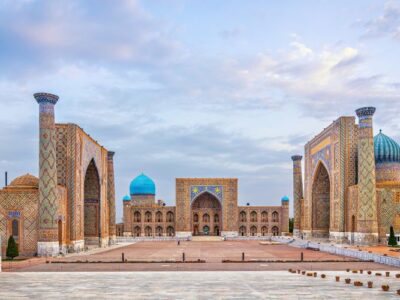Introduction
The Nag Tibba trek, also known as the “Serpent’s Peak,” is a hidden gem nestled in the Garhwal region of Uttarakhand. Standing tall at an altitude of 9,915 feet, Nag Tibba is the highest peak in the Nag Tibba range of the lower Himalayas. This trek is a perfect weekend getaway for nature lovers and adventure seekers, offering panoramic views of the snow-clad Himalayan peaks, dense forests, and serene camping sites. The trek is relatively easy and can be completed in two days, making it an ideal choice for beginners and families. In this comprehensive guide, we’ll provide a detailed itinerary for the Nag Tibba trek, along with essential tips to ensure you have an unforgettable experience.
1. Overview of Nag Tibba Trek
The Nag Tibba trek is one of the most accessible treks from Delhi and Dehradun, making it a popular choice for those looking to escape the hustle and bustle of city life. The trek offers a unique combination of dense forests, open meadows, and stunning mountain views, all within a short duration.
- Duration: 2 days
- Altitude: 9,915 feet
- Best Time to Visit: October to April
- Difficulty Level: Easy to Moderate
- Starting Point: Pantwari Village
2. How to Reach Pantwari: The Base Village
Pantwari is the starting point for the Nag Tibba trek and is located approximately 85 km from Dehradun. The journey to Pantwari is a scenic drive through the hills, passing through Mussoorie and Kempty Falls.
- By Air: The nearest airport is Jolly Grant Airport in Dehradun, which is well connected to major cities in India.
- By Train: The nearest railway station is Dehradun Railway Station, which has regular trains from Delhi and other major cities.
- By Road: Regular buses and taxis are available from Dehradun to Pantwari. You can also hire a private cab for a more comfortable journey.
3. Detailed Itinerary: Nag Tibba Trek
Day 1: Dehradun to Pantwari to Nag Tibba Base Camp (Drive 85 km, Trek 6 km, 4-5 hours)
Your adventure begins with an early morning drive from Dehradun to Pantwari village, the base of the Nag Tibba trek. The drive takes you through the scenic hills of Uttarakhand, offering stunning views of the valleys and the occasional glimpse of the snow-capped Himalayan peaks. Upon reaching Pantwari, you’ll start your trek towards the Nag Tibba Base Camp.
The trek from Pantwari to the base camp is a moderate climb, taking you through terraced fields, traditional Garhwali villages, and dense forests of oak and rhododendron. The trail is well-marked and offers beautiful views of the surrounding hills and valleys. As you ascend, you’ll notice the change in vegetation, with the forests becoming denser and the air cooler.
After trekking for about 4-5 hours, you’ll reach the Nag Tibba Base Camp, a wide clearing surrounded by thick forests. The campsite offers stunning views of the Bandarpoonch and Kedarkantha peaks. You’ll set up camp here and spend the evening around a bonfire, enjoying the serenity of the mountains under a starlit sky.
Day 2: Nag Tibba Base Camp to Nag Tibba Summit and Return to Pantwari (Trek 10 km, 6-7 hours)
The second day of the trek begins early in the morning with a climb to the Nag Tibba summit. The trail from the base camp to the summit is steep but short, and it takes about 2-3 hours to reach the top. As you ascend, the forest starts to thin out, giving way to open meadows and rocky terrain.
Upon reaching the Nag Tibba summit, you’ll be rewarded with panoramic views of some of the most prominent peaks of the Garhwal Himalayas, including Swargarohini, Bandarpoonch, Kedarnath, and Gangotri. The summit also offers a 360-degree view of the surrounding valleys and forests, making it a perfect spot for photography and soaking in the beauty of the Himalayas.
After spending some time at the summit, you’ll begin your descent back to the base camp. The descent is relatively easy and takes about an hour. After a short break at the base camp, you’ll continue your descent to Pantwari village.
Upon reaching Pantwari, you’ll drive back to Dehradun, marking the end of your Nag Tibba trek. The journey back offers another opportunity to enjoy the scenic beauty of Uttarakhand before returning to the hustle and bustle of city life.
4. Why Nag Tibba Trek is a Must-Do Experience
- Stunning Himalayan Views: The Nag Tibba trek offers some of the most breathtaking views of the Garhwal Himalayas. From the summit, you can enjoy panoramic views of the snow-clad peaks, including Bandarpoonch, Swargarohini, and Kedarnath.
- Short and Accessible: One of the major advantages of the Nag Tibba trek is its accessibility. The trek can be completed in just two days, making it an ideal weekend getaway from Delhi, Dehradun, or other nearby cities.
- Perfect for Beginners: The Nag Tibba trek is relatively easy and does not require any prior trekking experience. The well-marked trail, moderate altitude, and short duration make it a perfect choice for beginners and families looking to experience the thrill of trekking in the Himalayas.
- Rich Flora and Fauna: The trek takes you through dense forests of oak, rhododendron, and deodar, home to a variety of birds and wildlife. The lush green meadows and thick forests are a treat for nature lovers and provide ample opportunities for photography.
- Cultural Experience: The trek offers a glimpse into the traditional lifestyle of the Garhwali people. The villages along the trail have preserved their cultural heritage, and you can interact with the locals to learn more about their customs and way of life.
5. Preparation and Packing Tips for the Nag Tibba Trek
- Physical Fitness: Although the Nag Tibba trek is considered easy, it’s essential to be in good physical shape. Regular walking, jogging, or any form of cardio exercise can help you build stamina for the trek. Focus on leg strength and endurance to make the trek more enjoyable.
- Packing Essentials: Packing the right gear is crucial for a comfortable and safe trekking experience. Here’s a checklist of essential items:
- Clothing: Layering is key to staying warm in the mountains. Pack thermal inners, fleece jackets, and a waterproof jacket. Quick-dry trekking pants and a warm hat are also essential.
- Footwear: A good pair of trekking shoes with ankle support and a firm grip is a must. Break them in before the trek to avoid blisters.
- Backpack: A sturdy backpack with a capacity of 30-40 liters should be sufficient for the Nag Tibba trek. Make sure it has a rain cover to protect your belongings.
- Trekking Gear: Trekking poles, a headlamp, sunglasses, and a reusable water bottle are essential for a comfortable trekking experience.
- Camping Equipment: If you’re camping, pack a high-altitude sleeping bag, tent, and a camping mat. These items are usually provided by trekking agencies if you book a guided trek.
- Permits and Documentation: Although the Nag Tibba trek does not require special permits, it’s always a good idea to carry a copy of your ID proof. If you’re booking through a trekking agency, they will take care of the necessary documentation.
6. Best Time to Trek to Nag Tibba
The best time to undertake the Nag Tibba trek is during the winter months from October to April. During this period, the weather is pleasant, and the trail is covered in snow, adding to the trek’s charm. The summer months from April to June are also a good time to trek, with clear skies and blooming rhododendrons along the trail.
- October to April: Ideal for those who want to experience snow trekking and enjoy the cool, crisp mountain air.
- April to June: Perfect for trekkers who prefer warmer weather and lush green landscapes.
7. Responsible Trekking: Leave No Trace
As with any trek, it’s important to practice responsible trekking to preserve the natural beauty of the Nag Tibba region. Here are some tips to ensure you leave no trace:
- Carry Your Waste: Pack out all your trash, including biodegradable waste, to prevent littering in the pristine environment. Bring a small bag to collect your waste and dispose of it properly in Pantwari or Dehradun.
- Respect Local Culture: Be mindful of the local customs and traditions. Dress modestly and interact respectfully with the villagers.
- Preserve Wildlife: Do not disturb or harm the local wildlife. Observe animals and birds from a distance without intruding on their natural habitat.
- Use Eco-Friendly Products: Avoid using plastic products. Instead, carry reusable water bottles, cutlery, and bags to reduce your environmental impact.
Conclusion
The Nag Tibba trek is a delightful experience that offers a perfect blend of adventure, natural beauty, and cultural immersion. Whether you’re a seasoned trekker or a first-timer, this trek provides an excellent opportunity to explore the Himalayas without the challenges of a longer, more demanding trek. From the stunning views at the summit to the tranquil forest trails, every moment on the Nag Tibba trek is sure to leave you with unforgettable memories. So, pack your bags, lace up your boots, and set out on an adventure to discover the hidden treasures of the Garhwal Himalayas on the Nag Tibba
4o












